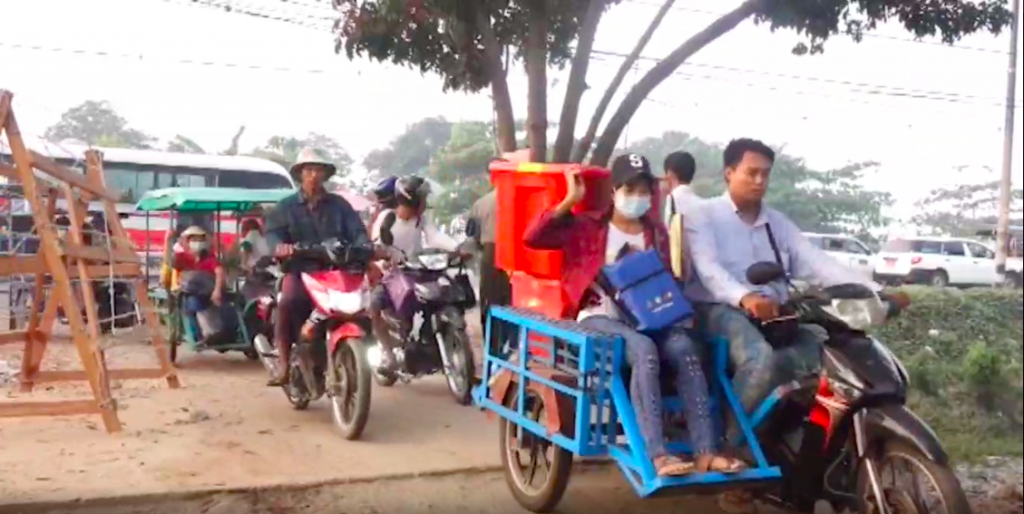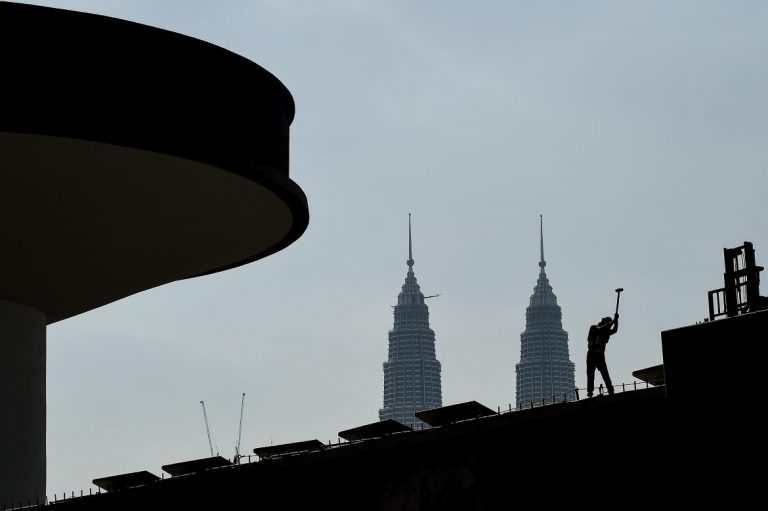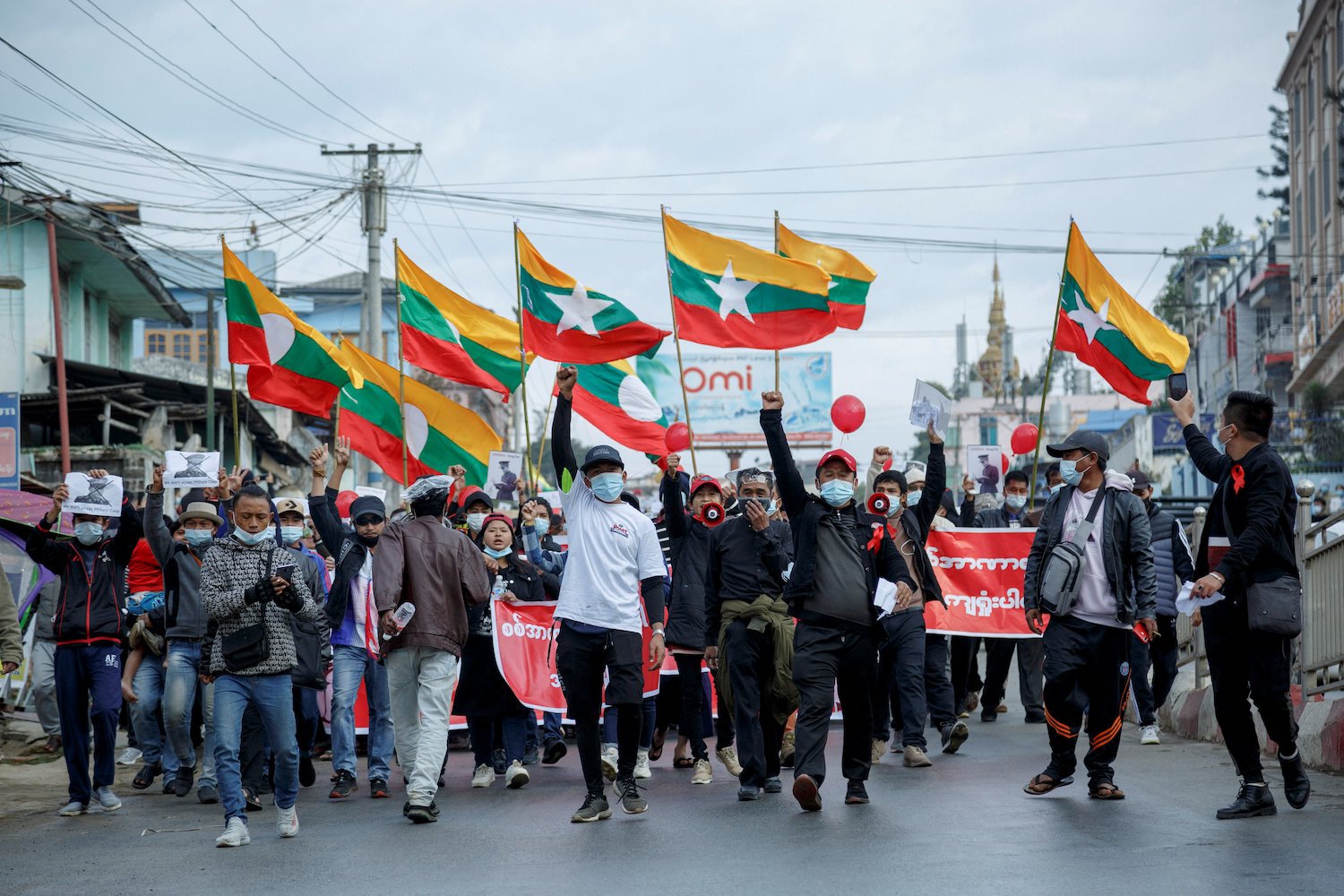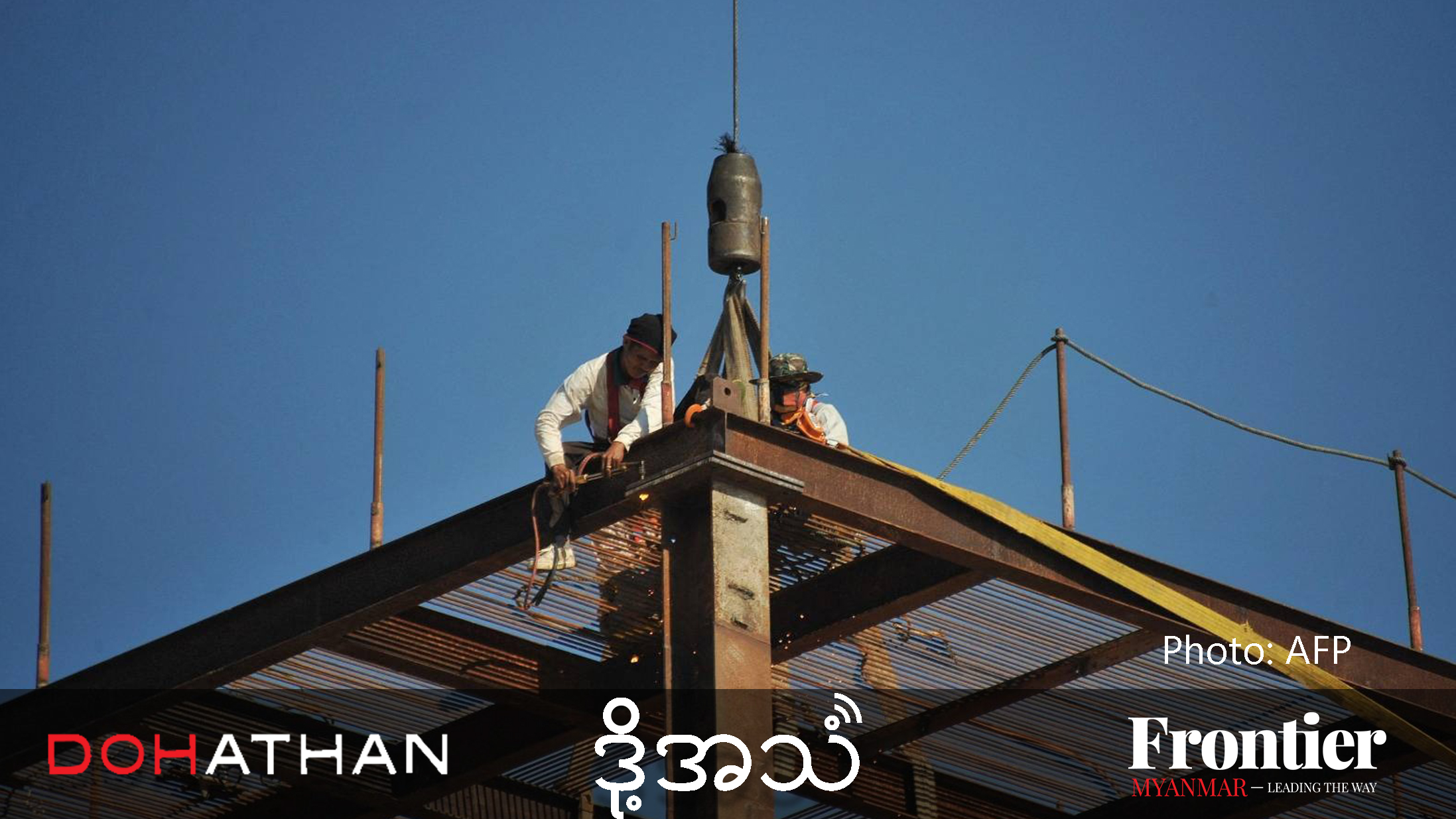Hlaing Tharyar Township residents began fleeing the city en masse Tuesday morning, after the military brutally cracked down on protests on Sunday, leaving dozens dead, and suspended civil law there.
By FRONTIER & AFP
Thousands of residents of Yangon’s western industrial Hlaing Tharyar Township began evacuating Tuesday morning, after the military regime placed it and five other Yangon townships under martial law following deadly weekend clashes between protesters and security forces.
The military declared martial law in Hlaing Tharyar on the night of March 14, after police used live rounds to crack down on demonstrations by factory workers, leaving dozens dead.
On Tuesday morning, residents of the densely-populated township set out on motorbikes and in trucks and tuk-tuks, journeying back to their home villages. Many of those leaving are thought to be migrants who came to work in Hlaing Tharyar’s garment factories, many of which are now closed.
“Many of them are migrant workers. Instability after the coup led to job losses, and then martial law,” said U Aung Khin Myint, a township resident.
But Aung Khin Myint said he wants people in other townships to know that plenty of his neighbours are sticking around to resist the regime.
“Many locals are [staying]. They are still fighting [against military rule],” he said.
Hlaing Tharyar is one of six Yangon townships the military regime placed under martial law in the wake of Sunday’s violence, covering more than a quarter of the city’s population – just over 2 million people. Anyone arrested in these townships can face trial by military tribunal, with sentences ranging from three years’ hard labour to execution.
Myanmar law expert Ms Melissa Crouch said the martial law declaration effectively gave complete control to military commanders and sidelined civilian administrators and judges.
“The use of martial law is extremely troubling and … represents a significant decline in the situation in Myanmar,” the University of New South Wales academic said.
The total death toll from Sunday’s violence is not known, but more than 70 people are thought to have died across the country. Hlaing Tharyar locals told Frontier that more than 40 people were killed there over the weekend by security forces and would be buried at the nearby Htein Pin Cemetery that afternoon, though Frontier could not independently confirm that number.
Hundreds of police remain stationed throughout the township, which is covered in makeshift hideouts and sandbag-and-tire barricades that residents have erected to slow advancing security forces.
The most reliable population figures for Hlaing Tharyar, from the 2014 census, put the number of residents at almost 700,000. However, more recent estimates for the township, which has grown rapidly in recent years, put its population as high as 1 million. It is also home to more factories than any other township in the commercial capital.
Before the crackdown on Sunday, demonstrators threatened to burn nearby factories if police fired live rounds, holding up placards that morning that said for each protester killed a Chinese-owned factory would be “turned to ash”; by that evening, several, mostly Chinese-owned factories lay smouldering.
As violence and insecurity have grown in the city, journalists – who, like protesters, had until now mostly feared arrests and live rounds from security forces – are increasingly facing a growing hostility from protesters too.
“Every street has a neighborhood security team, and people carry sticks and swords to protect themselves. Journalists are not locals, so I have to explain to them very clearly [what we’re doing],” a journalist in Hlaing Tharyar told Frontier on Tuesday. “Some accept it. Some do not.”
When Frontier covered the crackdown on Sunday night, several protesters accused our journalist and other media workers of being military spies, and cursed and bared weapons when we tried to photograph buildings and bridges in flames.
The violence that night capped the country’s deadliest day so far since crackdowns on protests began in mid-February, with the Assistance Association for Political Prisoners monitoring group saying 74 people died nationwide and putting the total number killed since February 1 at 183. More than 2,000 have been detained and a similar number are being actively prosecuted, it says.
‘Not in the interests of Myanmar’
The US once again condemned the violence, with US Secretary of State Antony Blinken on Tuesday accusing the military of “brutally repressing” protesters with lethal force.
The US State Department had previously called on all countries to “take concrete actions” to oppose the military regime.
“The junta has responded to call for the restoration of democracy in Burma with bullets,” State Department spokesperson Jalina Porter said on Monday.
China also spoke out on Monday, saying it was “very concerned” for the safety of its citizens in Myanmar after Sunday’s violence – which state media said saw more than 30 factories attacked, causing $37 million in damage.
Foreign ministry spokesman Zhao Lijian urged Myanmar to take actions to “resolutely avoid a recurrence of such incidents”.
“The actions of these outlaws are not in the interests of Myanmar and its people,” he told reporters in Beijing.
“China will continue to urge Myanmar to take concrete steps to stop all acts of violence and bring the perpetrators to justice.”







